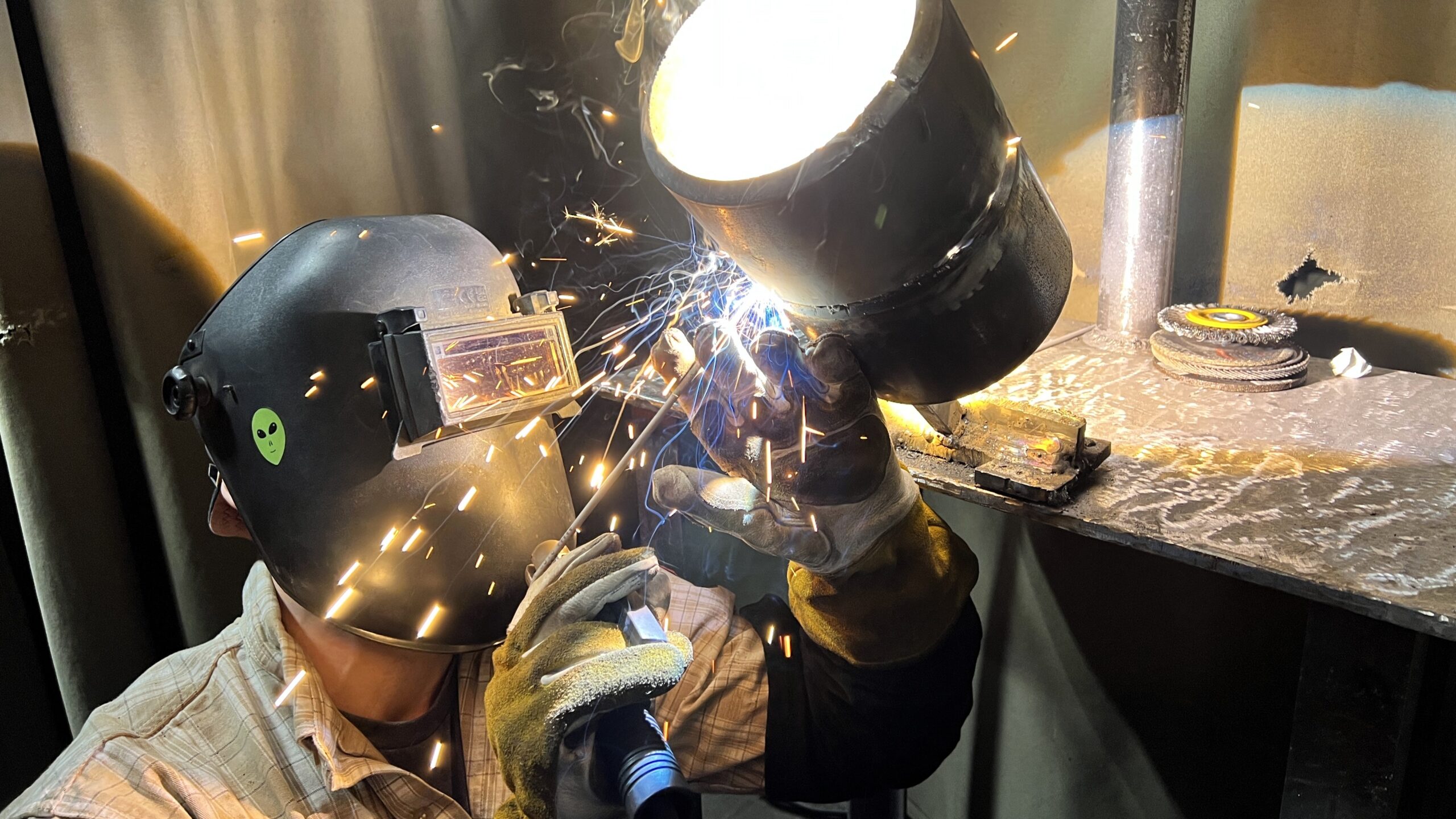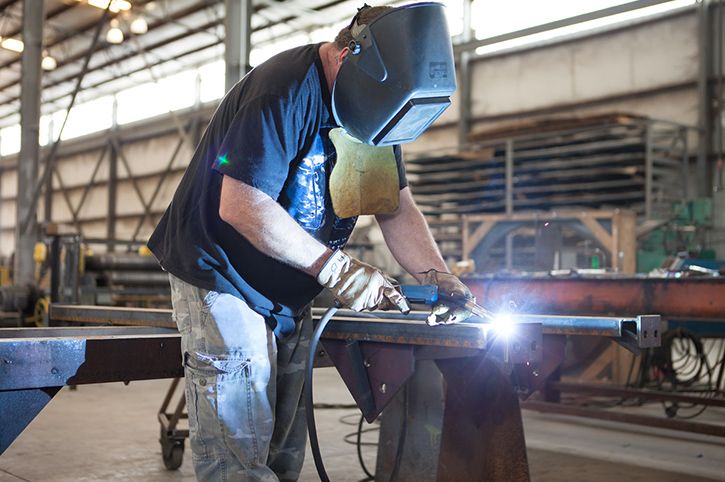Typical Welding Repair Service Issues and Just How to Address Them Properly
Welding repair services usually run into a variety of problems that can endanger the honesty of the end product. Common troubles include poor infiltration, porosity, and imbalance, to name a few. Each problem offers distinct challenges that need specific strategies for resolution. Recognizing these issues is vital for welders intending to enhance their abilities and results. This discussion will discover these common welding repair service concerns and efficient approaches to address them.
Poor Penetration
Insufficient penetration occurs when the weld metal falls short to completely fuse with the base product, resulting in weak joints and prospective structural failures. This problem frequently stems from not enough warm input, incorrect electrode angle, or incorrect welding speed. Welders may run into inadequate penetration due to a mistake of the essential parameters for a details product thickness or type. Furthermore, contamination on the base material's surface area can impede efficient bonding, aggravating the issue. To deal with insufficient penetration, welders should assure ideal settings on their devices and preserve a clean job surface area. Routine inspection of welds is suggested to identify any type of deficiencies early, allowing for prompt adjustments and the avoidance of jeopardized structural honesty in bonded assemblies.
Porosity
Porosity is a common defect in welded joints that manifests as little gas bubbles entraped within the weld metal. This issue can compromise the stability of the weld, resulting in lowered toughness and potential failure under tension. Montana Mobile Welding and Repair Belgrade. Porosity normally develops from contamination, wetness, or improper welding techniques, which enable gases to run away into the molten weld pool. To deal with porosity, welders need to ensure correct surface prep work, maintain a clean working setting, and utilize appropriate welding parameters. Furthermore, picking the appropriate filler material and securing gas can mitigate gas entrapment. Normal inspection and testing of welds can help identify porosity early, guaranteeing timely restorative actions are taken, therefore maintaining the top quality and reliability of the bonded framework
Imbalance
Misalignment in welding can develop from different aspects, consisting of improper arrangement and thermal development. Recognizing the source is crucial for efficient resolution. Numerous modification methods are readily available to straighten elements and ensure structural honesty.
Sources of Imbalance
Welding imbalance usually originates from a variety of underlying problems that can endanger structural honesty. One primary cause is incorrect fit-up of components before welding, which can result in spaces and uneven surfaces. Variations in thermal development during the welding process can likewise result in distortion, particularly if the materials being joined have various coefficients of expansion. Additionally, insufficient clamping and fixturing may fall short to hold elements safely in position, resulting in movement during welding. Badly kept equipment, consisting of welding equipments and tools, might present disparities in the weld grain, further adding to misalignment. Operator mistake, stemming from inadequate training or experience, can likewise play a substantial duty in creating misaligned welds.

Adjustment Techniques Readily Available
Attending to misalignment successfully requires a mix of restorative methods tailored to the certain problems handy. One usual method is using components or jigs to hold parts in the correct position throughout welding, guaranteeing regular placement. In addition, pre-heating the products can help in reducing distortion and improve fit-up. For considerable imbalance, mechanical realignment strategies, such as utilizing hydraulic jacks or clamps, can be used to remedy the placement before welding. Post-weld heat treatment may likewise be essential to soothe stresses triggered by imbalance. Finally, cautious evaluation and modification throughout the arrangement stage can protect against imbalance problems from ending up being considerable problems, promoting a smoother welding process and improving total architectural integrity.
Distortion
Distortion is an usual challenge in welding that can occur from different elements, including uneven cooling and heating. Comprehending the root causes of distortion is important for carrying out efficient prevention methods. Addressing this concern not only enhances architectural integrity but likewise boosts the overall quality of the weld.
Root causes of Distortion
When subjected to the extreme warmth of welding, products usually undergo adjustments that can result in distortion. This sensation mainly arises from thermal growth and tightening during the welding process. As the weld location warms up, the material increases; upon cooling, it contracts, which can produce interior stresses. Furthermore, irregular home heating throughout a work surface can intensify these stress and anxieties, resulting in warping or flexing. The sort of material additionally plays a substantial duty; metals with varying thermal conductivity and coefficients of expansion may respond differently, leading to unpredictable distortions. Inadequate joint layout and inadequate fixturing can contribute to imbalance during welding, raising the chance of distortion. Understanding these reasons is essential for reliable welding repair work and prevention techniques.
Prevention Techniques
Effective prevention methods for distortion throughout welding emphasis on regulating warmth input and making sure proper joint style. Keeping a consistent heat input helps to reduce thermal expansion and contraction, which can bring about distortion. Utilizing methods such as pre-heating the workpiece can additionally reduce the temperature level gradient, advertising uniform heating. Furthermore, selecting suitable joint styles, such as T-joints or lap joints, can enhance security and decrease anxiety concentrations. Applying appropriate fixturing to secure the work surfaces in position additionally help in preserving placement during the welding process. Ultimately, staggered welding sequences can distribute warm find out a lot more equally, protecting against localized distortion. By applying these methods, welders can considerably reduce the chance of distortion and boost the overall top quality of their welds.
Breaking
Cracking is a typical concern experienced in welding repair services, usually resulting from different aspects such as incorrect cooling rates, material option, or insufficient joint preparation. The event of cracks can considerably compromise the honesty of the weld, resulting in potential failings throughout procedure. To resolve this concern, welders need to first evaluate the origin, guaranteeing that materials work and suitably chosen for the details application. Additionally, regulating the air conditioning price throughout the welding procedure is essential; rapid air conditioning can induce anxiety and lead to splitting. Proper joint style and prep work also add to lessening the danger. Carrying out these strategies can improve weld high quality and sturdiness, ultimately lowering the likelihood of breaking in finished weldments.

Insufficient Combination
A substantial issue in welding repair work is insufficient combination, which occurs when the weld steel does not appropriately bond with the more base product or previous weld passes - Montana Mobile Welding and Repair Fabrication. This defect can cause weak points in the joint, possibly jeopardizing the stability of the bonded structure. Aspects adding to insufficient fusion include inadequate heat input, improper welding method, and contamination of the surfaces being joined. To resolve this concern successfully, welders must ensure correct pre-weld cleansing and surface area preparation, in addition to change their welding specifications to achieve appropriate infiltration and combination. Regular examination throughout the welding procedure can additionally aid recognize incomplete combination early, enabling for prompt corrective steps to improve the general quality of the weld
Overheating
While welding repair work can improve architectural integrity, overheating offers a significant challenge that can cause product destruction. Extreme heat during welding can modify the mechanical buildings of metals, causing reduced strength, enhanced brittleness, and warping. This phenomenon is particularly crucial in high-stress applications where structural reliability is critical. Identifying overheating can entail visual inspections for staining or distortion, along with keeping an eye on temperature during the welding process. To reduce the dangers connected with getting too hot, welders should utilize proper methods, such as controlling warm input, adjusting traveling rate, and using appropriate filler materials. In addition, applying pre- and post-weld warm therapies can aid bring back material properties and improve the general top quality of the repair, making certain long-lasting performance and safety.
Often Asked Inquiries
What Are the Typical Indications of a Welding Flaw?

Exactly How Can I Check My Welds for Top quality?
To evaluate welds for quality, one can make use of visual examinations, ultrasonic screening, and radiographic techniques. Each strategy assures structural stability, determines problems, and confirms adherence to defined criteria, ultimately boosting the reliability of the welded joints.
What Safety and security Safety Measures Should I Take While Welding?
When welding, one must focus on safety by putting on ideal individual protective equipment, ensuring correct air flow, securing combustible products away, maintaining a tidy work space, and recognizing environments to stop crashes and injuries.
Can I Fix a Weld Without Redoing the Entire Joint?
Fixing a weld without redesigning the entire joint is feasible, depending on the damage (Montana Mobile Welding and Repair Welding). Strategies such as grinding, adding filler product, or making use of a welding procedure can successfully address details flaws while maintaining the surrounding framework
What Equipment Are Vital for Efficient Welding Repair Works?
Essential tools for reliable welding repair services consist of a welding machine, cable brush, grinder, protective equipment, clamps, and filler products. Each tool plays a crucial role in ensuring quality and safety and security during the repair work process. Porosity typically arises from contamination, wetness, or improper welding methods, which enable gases to run away right into the molten weld pool. Inadequately maintained tools, consisting of welding makers and devices, might introduce variances in the weld grain, further adding to misalignment. When subjected to the intense warm of welding, materials typically undertake changes that can lead to distortion. Cracking is a common problem encountered in welding fixings, usually resulting from numerous factors such as incorrect air conditioning rates, material choice, or insufficient joint prep work. A significant concern in welding repair services is incomplete fusion, which occurs when the weld metal does not adequately bond with the base product or previous weld passes.